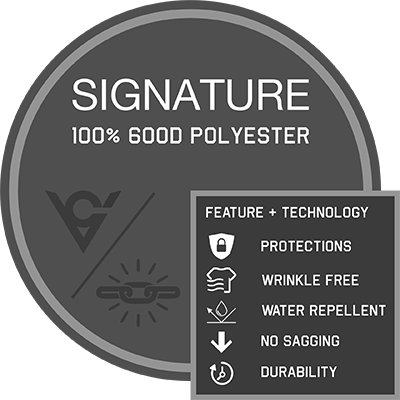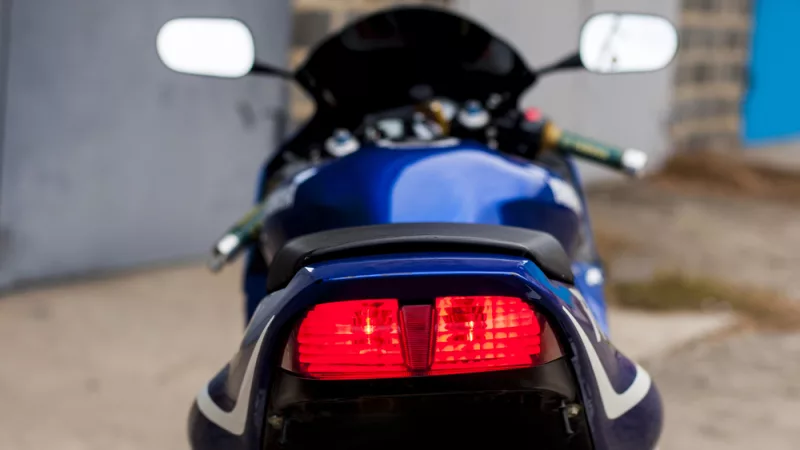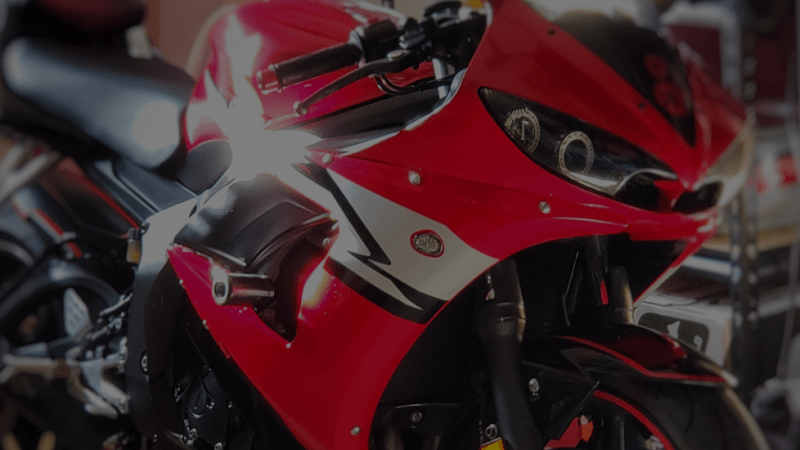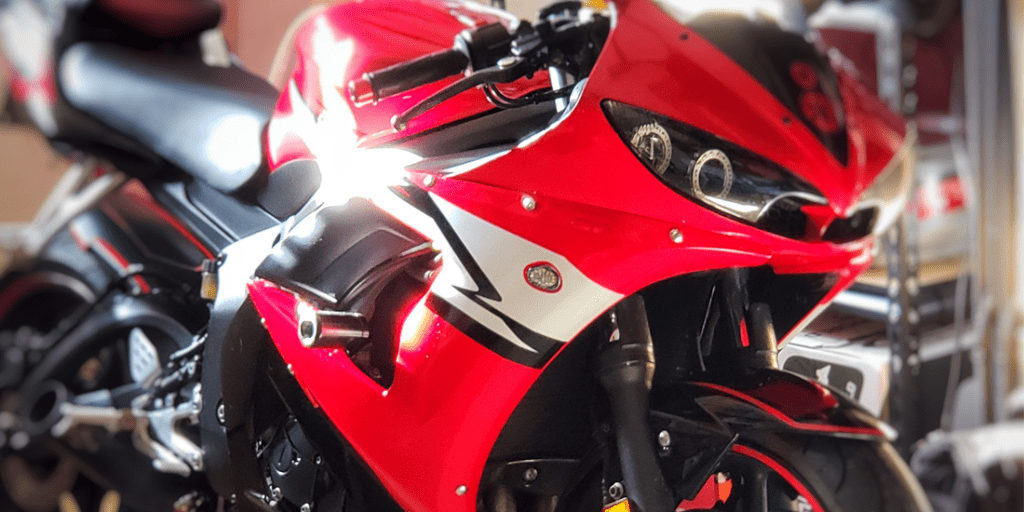Finding a Great Entry-Level Cycle Jacket - Viking Warlock Jacket Review
When critiquing motorcycle jackets, we have a tendency to judge them by the standards and needs of long-term, experienced cyclists. The unfortunate truth is that, for those just getting into motorcycling, these criteria may be a good bit different. For one thing, beginners will tend to spend somewhat less time on their bikes as they’re still getting a feel for them, and they’re less likely to be out there in the more extreme temperatures of high summer and mid-winter.
This means that some forgiveness in fitting and materials is called for when looking at a prospective first motorcycle jacket. In the case of the VikingCycle’s Warlock jacket, this may work out pretty well.
No products found.
The Look Of The Warlock Jacket
Well, let’s be honest with ourselves, we’re always going to demand that our jacket look really cool. It won’t do to look unstylish on our bikes, no matter if we’re a novice or a years-experienced rider. If the jacket doesn’t look good, nothing else matters. Maybe this isn’t the most prioritized way to think of things, but that’s just how it is.
While not the classic cruiser style so iconic in pop culture, this jacket does have a very modern classic vibe to it. It achieves a contemporary, unassuming but stylish look that blends many of the safety and comfort features of sport/street jackets, with the gentle form hugging and sleek nature that makes those cruiser jackets so beloved in the first place.
Moving forward, this even blend of these two styles will probably be somewhat timeless, which gives this jacket a unique future proof nature.

Comfort in a motorcycle jacket is a delicate balance. You don’t want to feel claustrophobic in the jacket, but at the same time, something too loose would have obvious problems. Similarly, you don’t want it to feel too bulky or heavy, but you want to feel like you’ve got something on. Finally, you want this balanced comfort to also provide good wind-cutting power, especially when it’s chilly out. Remember, the faster you go, the colder that air is going to be.
This jacket checks all but one of these boxes rather nicely. I felt like I had a solid jacket on, but I never felt claustrophobic, encumbered nor weighed down by it. The adjustable sleeves and collar meant that I didn’t feel like my circulation was cut off, but it still sealed me up well enough against the elements.
Unfortunately, the wind-cutting power of this jacket isn’t phenomenal, even with the liner in. It’s far from the worst, but in particularly chilly weather, the wind is still going to bite right into you with this jacket.
Motorcycle Jacket Safety
Safety is of course a big concern, especially for a beginner. This jacket manages to be pretty well-padded and abrasion-resistant, without feeling cumbersome. Granted, it’s not as fortified as a racing jacket, but I felt very safe in this jacket, especially thanks to the waist zipper that fastens to pants to provide a unified layer of protection.
It definitely passes my standards for safety, no question there.
VikingCycle’s Signature Rain Gear Fabric is a 100% 600D Polyester coated by PU (polyurethane). The 600D Polyester coated by PU, is also wind and water resistant so it will provide great protection against cold wind and rain and it will not sag and creates less wrinkle overtime. The fabric is light weight but highly resilient against abrasions to provide more resistance between the body and the road for your protection, and also stands against wear and tear for product durability.

No products found.
Bells and Whistles
Finally, we come to the additional accoutrements this jacket offers. It’s not the most elaborate design out there, but it’s not without its charms.
- Large zipper tabs make it easy to operate the zippers with gloves on – something that can be exquisitely frustrating.
- Plenty of inside pockets for your phone, your wallet, etc. where they’re protected from the elements and impacts.
- Removable liner makes this jacket comfortable for warm and cool riding.
Warlock Jacket Textile Motorcycle Jacket Overview

No products found.
Pros and Cons
Pros
- This is an affordable jacket, especially for the quality, which is a major deciding factor for the beginner motorcyclist.
- The inside pockets are a nice touch.
- The neutral, non-aggressive style is timeless, contemporary and pairs with any style of bike.
- The zippers are phenomenal.
Cons
- Removable liner takes most of the inner pockets with it, and doesn’t cut wind well.
- Velcro is used in stead of button clasps – this is a noisy material that wears out and accumulates “fuzz”.
- There are synthetic materials in the cuffs that may be less durable.
Warranty Information
VikingCycle takes the highest pride to provide the best motorcycle gear craftsmanship and material in the world. We always stand behind all our product quality. If you experience any manufacturing defects on any of our items, please let us know and return it for a replacement within 1 year of purchase.
This warranty does not cover any item damage due to normal wear and tear or improper care. Normal wear and tear is unavoidable and it is a sign that the product has been worn, such as small scratches or color change.
To claim any manufacturing defect warranty and to get your replacement as soon as possible, please let us know by emailing us at info@vikingcycle.com with your order number and a photo of the product defect.
Conclusion
This jacket’s not perfect, but then, is anything ever truly perfect? As a seasoned rider, I’d personally purchase this jacket. It is affordable, comfortable and a stylish first jacket for a beginner? I’d definitely be happy recommending the Warlock jacket.
To purchase, click here:
No products found.
To learn more about choosing the ideal motorcycle jacket for your needs, subscribe to my YouTube channel today!
No products found.
You Might also like
-
5 Letter Motorcycle Vanity Plate Ideas: Your Guide to Standout License Plates
Your motorcycle is an extension of your personality, a statement on two wheels. And what better way to personalize it than with a unique and eye-catching vanity plate? But coming up with the perfect 5-letter combination can be a challenge. Fear not, fellow riders! This guide will spark your creativity and help you find the ideal license plate to express your inner biker spirit.
Key Takeaways
- Unleash your individuality with a unique and personalized motorcycle vanity plate.
- Explore a variety of 5-letter ideas, from classic cool options to witty wordplay and location-inspired choices.
- Don’t forget to personalize it further with initials, birth year, or your biker nickname.
- Always check local regulations to ensure your chosen plate and bracket comply with safety and visibility requirements.
- Seek inspiration from online communities of motorcycle enthusiasts.
Comparison Table: Motorcycle Vanity Plate Ideas by Category
Category Example Classic Cool RIDER, SPEED, CRUISE Witty Wordplay BIKER, ZOOM, TWISTY Location Love [State Code], CANYON, COAST Personalized Touches Initials, Birth Year, Nickname Introduction: Unleashing Personality on the Road
Motorcycles aren’t just modes of transportation; they’re expressions of identity and freedom. A personalized license plate is a finishing touch that showcases your unique style, humor, or philosophy. This guide offers a collection of creative five-letter motorcycle vanity plate ideas, alongside tips for crafting your perfect plate. Whether you’re looking for inspiration or advice on how to secure your custom plate, we’ve got you covered.
Why Choose a 5-Letter Vanity Plate?
Five-letter plates are concise yet versatile, allowing for a wide range of expressions. They can spell out words, names, or acronyms that resonate with your personal story or your bike’s character. The brevity of these plates makes them easy to remember and recognize, adding an extra layer of personalization to your ride.
Top 5-Letter Motorcycle Vanity Plate Ideas
- RIDER – A straightforward choice that speaks volumes about your passion.
- SPEED – Perfect for the enthusiast who loves to push the limits.
- BEAST – For a powerful bike that commands attention.
- ROAMR – Embrace the spirit of adventure and the open road.
- TWIST – A nod to the twists and turns that make riding exhilarating.
- CRUISE – Perfect for relaxed rides and scenic journeys.
Witty Wordplay:
- BIKER – A straightforward and self-explanatory option.
- ZOOM – Captures the exhilarating feeling of acceleration.
- TWISTY – A playful reference to your love for winding roads.
- LEAN – Hints at your cornering skills (or aspirations!).
- SHIFT – A clever reference to the motorcycle’s essential gear changes.
Top 5-Letter Crypto Vanity Plate Ideas:
- HODL – A popular crypto term representing a long-term buy-and-hold strategy.
- SATOSHI – A tribute to Satoshi Nakamoto, the pseudonymous creator of Bitcoin.
- GWEI – The smallest unit of Ether, the cryptocurrency used on the Ethereum blockchain.
- MOON – A slang term expressing hope for a cryptocurrency’s price to rise significantly.
- FIAT – Refers to traditional currencies like USD or EUR, often contrasted with crypto.
Bonus Ideas:
- BTC – Abbreviation for Bitcoin, the first and most popular cryptocurrency.
- ETH – Abbreviation for Ether, the second-largest cryptocurrency by market capitalization.
- NFT – Stands for Non-Fungible Token, a unique digital asset representing ownership of something.
- DEFI – Short for Decentralized Finance, a financial system built on blockchain technology.
- MINER – Refers to individuals who use computers to validate cryptocurrency transactions and earn rewards.
Location Love:
- [State Code] – Show your state pride with a simple and bold choice.
- CANYON – For those who love carving through mountain passes.
- COAST – Perfect for coastal cruisers.
- RIVER – If scenic riverside rides are your jam.
- [City] – Represent your hometown or favorite riding location.
Personalized License Plate Ideas for Motorcycles
When it comes to personalized plates, the options are limitless. Consider using:
- Nicknames: An affectionate or cool nickname that defines you.
- Hobbies: Words that represent your interests or hobbies outside of biking.
- In-jokes: Something that only you and your riding buddies understand.
- Initials: A classic choice with a personal touch.
- Birth year: A unique way to incorporate a personal detail.
- Favorite number: If it’s lucky or meaningful, flaunt it!
- Model name: Show off your love for your specific motorcycle.
Motorcycle License Plate Ideas: Beyond Words
Apart from text, consider the aesthetic of your plate. Some regions allow symbols, which can help your plate stand out even more. For example, a heart symbol can replace the word “love,” or a number can substitute for its written form.
License Plate Motorcycle Bracket
Choosing the right bracket is as important as the plate itself. A bracket that complements your motorcycle’s style while securely holding your plate is crucial. Consider these factors:
- Material: Durable materials like stainless steel or aluminum resist rust and wear.
- Design: From minimalist to ornate, select a bracket that matches your bike’s aesthetic.
- Installation: Ensure the bracket fits your bike’s make and model for a seamless installation.
License Plate Ideas for Motorcycles: Making It Unique
Your license plate should be as unique as your ride. Experiment with:
- Numbers: Use numbers to represent letters or significant dates.
- Creative Spelling: Play with phonetics to create memorable plate ideas.
- Mix and Match: Combine letters and numbers for a plate that stands out.
Beyond the Plate: Mounting and Inspiration
Once you’ve found your perfect 5-letter combination, finding a license plate motorcycle bracket is crucial for proper mounting and legal compliance. Check your local regulations to ensure your chosen plate and bracket combination adheres to safety and visibility requirements.
For further inspiration, explore online communities and forums dedicated to motorcycle enthusiasts. You’ll find a treasure trove of creative license plate ideas, motorcycle customization tips, and a supportive community of fellow riders.
Remember, your motorcycle vanity plate is a reflection of your unique style. So, have fun, be creative, and ride safe!
Conclusion: Your Plate, Your Pride
A personalized motorcycle license plate is more than just a legal requirement; it’s a statement. It’s an opportunity to showcase your creativity, personality, and passion for riding. With the ideas and tips provided, you’re well on your way to choosing a vanity plate that reflects your unique spirit. Remember, the best plate is one that brings a smile to your face every time you gear up for a ride.
Explore your options, follow the regulations, and make your motorcycle truly yours. Ride safe, and let your personalized license plate tell your story to the world.
Personalized Plates in New Jersey
FAQs:
-
Can I use special characters in my vanity plate?
- It depends on your region’s DMV rules. Some allow limited use of symbols, while others restrict plates to letters and numbers only.
-
How do I check if my desired plate is available?
- Most DMVs offer an online service where you can check the availability of your desired plate.
-
Is there an extra cost for personalized plates?
- Yes, personalized plates typically come with an additional fee over the standard registration cost.
-
How long does it take to receive my personalized plate?
- Processing times vary by region but expect several weeks from application to delivery.
-
Can I transfer my personalized plate to a new motorcycle?
- Yes, in most jurisdictions, you can transfer your personalized plate to a new vehicle, subject to DMV procedures and fees.
-
How to Choose the Right Motorcycle Jacket
The motorcycle jacket is one of the most iconic artifacts of biker culture, especially in public consciousness. When people picture a motorcyclist, they tend to envision someone clad in a well-made, well-fitted leather jacket.
With the continuous advancement of material sciences, the constant diversification of motorcycles themselves, and the rather varied climates of a global society, there are a plethora of jackets to choose from.
You’re bound to find the jacket that’s ideal for you, but there are a few variables to consider, such as what you find comfortable, the climates you’ll be riding in, and the type of motorcycle you’re going to use.
No products found.
The Four Motorcycle Jacket Styles
There are basically for style groups, when it comes to these jackets – Cruiser, Racing, Sport/Street and Adventure Touring/Dual Sport. Each of these has its own strengths, making them ideal for a specific riding style. Surprisingly, no single type of material/textile is standard for any given style of jacket either.
- Cruiser – This is the classic motorcycle jacket that most picture – the icon, the stereotype. While most commonly seen in leather, they’re also available in many other styles, with a focus on comfort and aesthetic. These are ideal for casual riders and those that use their motorcycle as transportation going about their daily lives.
- Racing – Racing jackets are distinctive for their tight fit and somewhat “space age” appearance. The tight fit is to prevent wind resistance, and the distinct appearance is due to flex panels designed to allow mobility while providing padding against abrasions from dangerous high-speed offs. They tend to have a narrower collar, and a zipper to fasten to racing pants (preventing ride up).
- Sport/Street – These jackets are a casual modification of racing jackets, taking the slower speeds into account. They’re distinguished by the less prominent flex panels and the looser fit focusing on comfort. Seasonal jackets of this sort also include insulation and ventilation to help keep the rider cool or warm in harsh conditions.
- Adventure/Dual Sport – This is a less common style of jacket, used primarily by those whom go on long rides across varied, often rough climates and terrains. They look like nothing more than a survival jacket imitating a racing jacket, with pockets for gear, layers of insulation and impact padding, and a form-hugging design with an additional fastening around the neck. These are ideal for winter riding, or those long trans-continental adventures.
No products found.
Important Motorcycle Jacket Factors To Consider
There are important factors to consider, which will determine the material you choose, and the style of jacket most suited to your needs.
- Leather or Textile – The first decision you’ll want to make is if you want leather or textile. Leather has a classic look, and many regard it as quite comfortable. However, its real strength is in its resistance to abrasion. However, for comfort and versatility in multiple climates and weather conditions, textiles tend to outperform it. This all comes down to whether you want comfort in various climates, or wish to focus on the durability of leather.
- Visibility/Reflectivity – While many would argue that subtlety is a sign of good everyday design, a jacket that catches the eye can actually be a major boon to safety. You want people to see you, and be aware of your presence and location on the road!
- Liners and Armor/Padding – If you ride in a temperate area with both hot and cold weather, you may want to look for a jacket with removable or all-weather lining that can help keep you warm in the winter, without the jacket cooking you in the summer. Similarly, even if you’re not a dare devil (and you shouldn’t be!), focusing on padding/armor around the chest, back and shoulders is also important, as these are areas where damage can be the worst if you have a nasty off.
- Fitment – Finally, you want a jacket that fits you well, and comfortably. It can be hard to find one that’s a perfect fit, but many styles of jacket have fitment adjustments on the waist and slides on the sleeves, which provide just the right amount of hug or slack for your personal comfort standards. You don’t want to wear a jacket that’s too tight or constrictive, cutting off circulation. The fatigue from this can lead to serious dangers.
To learn more about the different styles of jackets, which ones suit which styles of riding, and much more about the adventurous world of motorbiking, subscribe to my YouTube channel today!
No products found.
-
How To Start A Yamaha R6
Starting a motorcycle is easier than it used to be, thanks to technology. While there are various kinds of bikes, starting a Yamaha R6 or other fuel-injected motorcycles is more or less then same across the board.
Here is how you start a fuel-injected motorcycle, like the Yamaha R6:
How To Start A Yamaha R6 Starting The Engine of a Yamaha R6
You can find this information in the owner’s manual of your bike, too. Before starting the bike, make sure you have done the following:
- The transmission is in neutral.
- The transmission is in gear, the clutch is pulled, and the kickstand/sidestand is stowed. Some modern models, Yamaha included, have a safety feature that will prevent the bike from starting if the sidestand hasn’t been raised.
Next, follow these steps precisely:
- Insert the key into the ignition.
- Turn the key to the ON position. Make sure the engine stop switch is set to the correct position.
- Warning lights and indicator lights should illuminate momentarily then disappear if conditions are satisfactory. These lights include:
- Oil level
- Coolant temperature
- Fuel level
- Shift timing
- Engine problems
- Immobilizer system
- Shift the transmission into neutral. The light should come on. If not, you might have an electrical circuit problem.
- Start the engine with the start switch.
- In the event of failure, wait a few seconds and try another start. Don’t draw out the time trying to start the engine to preserve battery power. Do not extend for more than 10 seconds.
General Instructions for a Fuel-Injected Motorcycle
Here’s some instructions to follow if you don’t have the make/model mentioned above:
How To Start A Motorcycle
- Put the motorcycle in neutral. Neutral is always located between 1st and 2nd gear.
- Put the key in the ignition if necessary.
* Note: Fuel-injected motorcycles have an engine management system. This means you don’t have to worry about using the choke lever. Only a small amount of throttle will be needed, regardless of engine temperature. - Start pulling the clutch near the left handlebar. Some riders choose to pull the clutch and front brake simultaneously, but the choice is yours.
- Press and hold the start button. You will find this on the right handlebar. Maintain your hold on the clutch.
- The motorcycle should automatically catch and start.
- If the engine doesn’t turn over and start immediately, you can try using the throttle while pressing the start button. Make sure you are holding the clutch.
- Remember to never crank the engine for more than 10 seconds clips at a time. Otherwise, you’re wasting battery power.
- You can slowly start to release the clutch.
Now, you’re ready to ride!
Final Thoughts
Unlike carburetor motors, fuel injection systems rarely fail. To prevent the pump from failing, do some routine maintenance. Get into the habit of listening to the bike and know what a healthy running engine sounds like. That way, if something unusual happens, you will be able to tell whether or not something is wrong with the pump fuse by sound alone.
Modern fuel-injected motorcycles are easy to start. Follow the instructions in this article, and you will have no problem.
For more information about how to start, ride, and care for your motorcycle, check out my YouTube channel. Hit the subscribe button for notifications whenever there’s an update.










